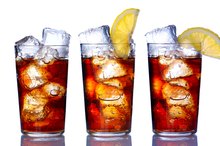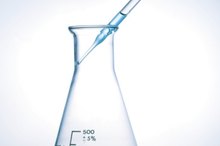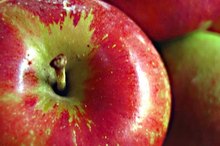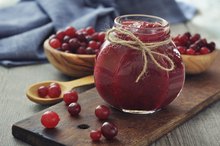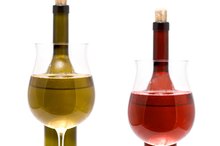What does fact checked mean?
At Healthfully, we strive to deliver objective content that is accurate and up-to-date. Our team periodically reviews articles in order to ensure content quality. The sources cited below consist of evidence from peer-reviewed journals, prominent medical organizations, academic associations, and government data.
- Applied and Environmental Microbiology: Benzoic Acid's Specific Effects on Yeast Intracellular Membrane
- Applied and Environmental Microbiology: Benzoic Acid's Specific Effects on Yeast Intracellular Membrane
- Applied and Environmental Microbiology: Mechanism of action of benzoic acid on Zygosaccharomyces bailii
- Applied and Environmental Microbiology: Mechanism of action of benzoic acid on Zygosaccharomyces bailii
The information contained on this site is for informational purposes only, and should not be used as a substitute for the advice of a professional health care provider. Please check with the appropriate physician regarding health questions and concerns. Although we strive to deliver accurate and up-to-date information, no guarantee to that effect is made.
Food Preservatives: Benzoic Acid
Though benzoic acid is used in cosmetics, dyes, plastics and insect repellents, it is most commonly included in food products as a preservative. The earliest mention of benzoic acid appears from the 16th century. The substance received its name from gum benzoin, the plant from whose resin it was first derived. In the 19th century, benzoic acid was synthesized from coal tar. Today it is manufactured from toluene, a petroleum byproduct.
Features
Encyclopedia Britannica describes benzoic acid as a colorless organic compound 1. It is classified as a carboxylic acid, which means it is formed of a carbon bonded to an oxygen atom and a hydroxyl group (-OH). It is weakly acidic, with a pH of 2.8. In normal conditions it has a white, flaky appearance that actually consists of small, needle-like crystals.
- Encyclopedia Britannica describes benzoic acid as a colorless organic compound 1.
- It is weakly acidic, with a pH of 2.8.
Function
What is Sucrose Laurate and How Is It Used?
Learn More
Both benzoic acid and sodium benzoate, its salt form, have inhibitory effects on the growth of yeast, a major cause of food spoilage. In particular, yeast is particularly devastating in foods and drinks with a low pH and a high sugar content. A study published in 1991 in Applied and Environmental Microbiology described the metabolic disruption benzoic acid wreaks upon yeast cells 23. By slowing the yeast’s ability to ferment sugars, benzoic acid starves the yeast of energy and prevents its growth.
- Both benzoic acid and sodium benzoate, its salt form, have inhibitory effects on the growth of yeast, a major cause of food spoilage.
- By slowing the yeast’s ability to ferment sugars, benzoic acid starves the yeast of energy and prevents its growth.
Considerations
Because benzoic acid is toxic, the amount of benzoates that can be added to foods is carefully controlled. Codex Alimentarius, an international treaty dictating food safety standards, limits the amount of benzoic acid or sodium benzoate to 0.05 to 0.1 percent by volume. Most foods are allowed no more than 1,000 mg per kilogram. Liquid egg products, diet foods, chewing gum and processed vegetables are among the foods with the highest amount of benzoate legally allowed.
- Because benzoic acid is toxic, the amount of benzoates that can be added to foods is carefully controlled.
Warning
The Difference Between Citric Acid, Ascorbic Acid & Sorbic Acid
Learn More
There is some concern that benzoates added to some types of soft drinks might produce benzene, a dangerous carcinogen and environmental pollutant. Benzene exposure typically comes from breathing exhaust fumes, but it can also be produced from the interaction of benzoic acid and ascorbic acid, a precursor of vitamin C. The pH of the beverage, the temperature at which it is stored and the extent of exposure to UV light could all affect the extent to which benzene is produced. Current data, however, is insufficient to indicate reliably whether benzene is formed as result in the interaction of ascorbic and benzoic acids in common products.
Potential
A 2004 study by the Department of Biochemistry and Food Science of the Hebrew University of Jerusalem described a novel way to use benzoates to prevent food spoilage. If yeast is starved of nitrogen, it nevertheless can power itself through a catabolic process in which it converts some of its own internal structures into energy. Benzoic acid effectively inhibits this metabolic process at lower concentrations than it takes to directly inhibit fermentation. By combining these two approaches, meaningful prevention of food spoilage could be obtained with lower levels of preservatives.
- A 2004 study by the Department of Biochemistry and Food Science of the Hebrew University of Jerusalem described a novel way to use benzoates to prevent food spoilage.
- If yeast is starved of nitrogen, it nevertheless can power itself through a catabolic process in which it converts some of its own internal structures into energy.
Related Articles
References
- Encyclopedia Britannica: Benzoic Acid
- Applied and Environmental Microbiology: Benzoic Acid's Specific Effects on Yeast Intracellular Membrane
- Applied and Environmental Microbiology: Mechanism of action of benzoic acid on Zygosaccharomyces bailii
- Musyoka JN, Abong GO, Mbogo DM, et al. Effects of Acidification and Preservatives on Microbial Growth during Storage of Orange Fleshed Sweet Potato Puree. Int J Food Sci. 2018;2018:8410747. doi:10.1155/2018/8410747
- U.S. Food & Drug Administration. Select Committee on GRAS Substances (SCOGS) Opinion: Benzoic acid, sodium benzoate. Updated December 14, 2017.
- U.S. Food & Drug Administration. Questions and Answers on the Occurrence of Benzene in Soft Drinks and Other Beverages. Updated January 24, 2018.
- Smith MT. Advances in Understanding Benzene Health Effects and Susceptibility. Annu Rev Public Health. 2010;31:133-148. doi:10.1146/annurev.publhealth.012809.103646
Resources
Writer Bio
Joseph Nicholson is an independent analyst whose publishing achievements include a cover feature for "Futures Magazine" and a recurring column in the monthly newsletter of a private mint. He received a Bachelor of Arts in English from the University of Florida and is currently attending law school in San Francisco.
